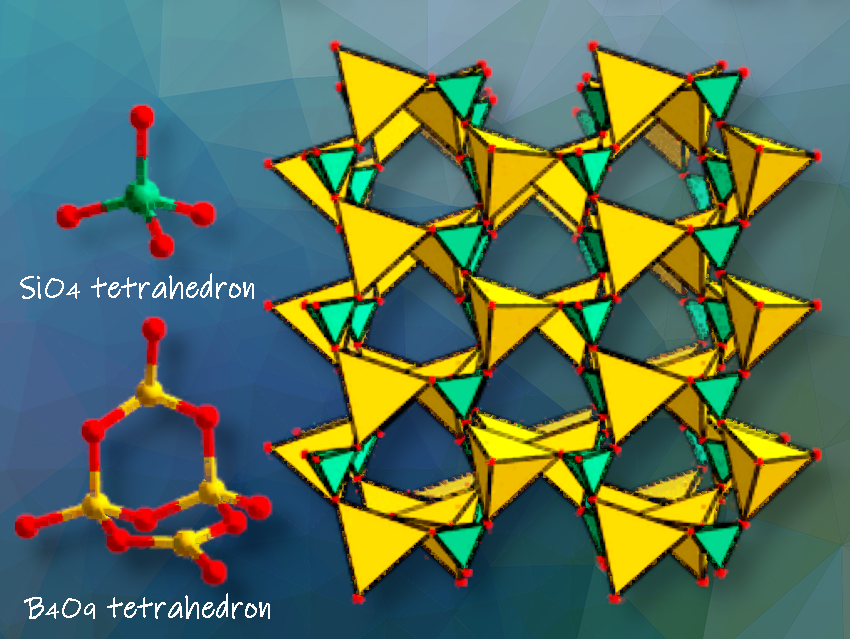Yu Han, University of Technology, Guangzhou, China, Xinxiong Li, Fuzhou University, China, Qichun Zhang, City University of Hong Kong, China, and colleagues have synthesized a 3D metal-free inorganic framework (H2en)[Si(B4O9)], called CityU-11 (pictured), containing Si–O–B bonds. H2en denotes ethanediamine, C2H4(NH2)2. The team studied the structure and physical properties using single-crystal X-ray diffraction (SCXRD), low-dose high-transmission electron microscopy (LD-HRTEM), ultraviolet-visible absorption spectroscopy, thermal gravity analysis (TGA), etc.
The single crystals of CityU-11 were grown by a mild solvothermal method, where the solvent is a mixture of mesitylene, 1,4-dioxane, and ethylenediamine. The raw materials, including SiO2, H3BO3, and a tiny amount of NH4F, were added to a Pyrex tube. The tube was degassed and flame-sealed under liquid nitrogen before reacting at 150 °C for five days.
CityU-11 has well-ordered Si4+ and B–O building blocks and belongs to the noncentrosymmetric space group of Pnn2 (the orthorhombic system). Its asymmetric unit contains one [B4O9]6– cluster (labeled as B4), one Si4+ cation, and two halves of (H2en)2+ cations. Si is tetrahedrally coordinated to O atoms. The B4 cluster is formed by connecting two BO3 triangles and two BO4 tetrahedra. Each B4 cluster connects to eleven other B4 clusters through four neighboring SiO4 tetrahedra and vice versa. Thus, the B4 clusters and SiO4 tetrahedra are bridged by corner-sharing to form a [Si(B4O9)]n2n– anionic zeolitic framework with one-dimensional channels (diameter ∼5 Å) along the b-axis. Viewed along the c-axis, the framework shows straight channels with 8-membered rings and 11-membered rings. The framework shows a crb topology when B4 and SiO4 tetrahedra are simplified to 4-connected nodes, respectively. Two independent (H2en)2+ cations are in two types of channels, connected to the anionic framework via H-bonding interactions.
CityU-11 has an interesting optical property with a moderate birefringence of 0.0258@550 nm. According to the researchers, their work provides valuable guidelines for the design and preparation of new borosilicate zeolites and their relevant applications.
- Borosilicate-Based Framework: Synthesis, Single-Crystal Structure Study, and Physical Properties,
Qiang Dong, Lei Zhang, Cailing Chen, Miaomiao Xue, Zengkui Zhu, Xiang Wang, Xin Wang, Yu Han, Xinxiong Li, Qichun Zhang,
Inorg. Chem. 2024.
https://doi.org/10.1021/acs.inorgchem.3c03964




